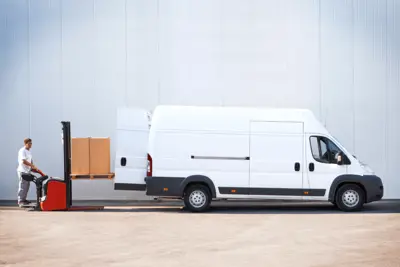What Is Fueling The Growth Of Van Sales In US?
Special to The Auto Chanel
From LMC Automotive
By Augusto Amorim, Senior Manager
American Vehicle Sales Forecasts
London UK 20 AUGUST 2019; Market Trends: They may not be as alluring as a convertible or as hot as an SUV, nor do they share the spotlight with Pickups when it comes to earnings calls, but, nevertheless, Van sales in the US are booming. Growth in the segment during the first half of 2019 averaged 4.2% compared to the year-ago period, only marginally behind the 4.4% increase in Pickup sales. This compares to a 1.6% uptick for SUVs, a 9.5% drop for Cars and double-digit declines for the MPV and Sporty segments. In July, Van sales grew by a further 11.8%, once again hot on the heels of the Pickup segment.
So, what is driving this demand?
Economic Growth
In a segment that is intrinsically linked to the health of the economy, ten years of uninterrupted economic growth in the US – the longest expansion on record – has clearly benefited sales. Despite prevailing headwinds (tariffs, lower fiscal stimulus and slower global growth), private sector confidence remains resilient. Economic growth should support further investment from the business sector, particularly as Vans are seen as an asset. Looking at the data, there is a positive correlation, albeit a modest one, between GPD growth and increased demand for Vans.
Tax Regime Changes
The new US tax code, which was signed into law in December 2017, changed how companies can depreciate their assets. The 100% depreciation deduction generally applies to assets with a recovery period of 20 years or less, including, among others, machinery and equipment. In other words, assets can be depreciated immediately, thus allowing companies to plough funds back into their operations.
E-Commerce Boom
According to the Census Bureau, online sales grew by 14-17% in the last five years. Despite a slight dip in Q1 2019, growth in the e-commerce sector remained high, at 12%, generating US$137.7 billion. To move these goods from the warehouse to the consumer, online traders rely on fleets of Vans. Unsurprisingly, shiny new Ram ProMasters, bearing the Amazon Prime logo, have become a ubiquitous sight across the US.
Fleet sales are typically seen as detrimental to the industry and most Van sales tend to be for fleet purposes. But there is a flipside to selling fleets of commercial Vans, both for dealers and OEMs. For instance, companies often require dealers to install specific equipment in their fleets. And given that commercial Vans clock up far more mileage than the average private vehicle, they require regular maintenance, all of which generates revenue for dealerships.
Project Longevity
Vans tend to have very long life cycles and most current projects are already fully financed. Granted, Mercedes-Benz renewed the Sprinter in 2018, but, more typically, General Motors has continued to build what is essentially the same version of the Chevrolet Express and GMC Savana since 2002. And because the differentiation between models tends to be minimal, we often see competing OEMs collaborate on Van projects to lower development costs. So, while the ProMaster we habitually see delivering goods for Amazon may have a Ram badge on its grille, it is actually a rebadged version of the European Fiat Ducato, which itself is basically a Peugeot Boxer/Citroën Jumper.



